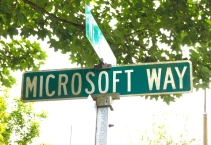SharePoint 2013 and April CU 2014 issues.
28/04/2014 Leave a comment
- SP1 was released in February 2014 but due to a problem. with it, it has been republished in April 2014.( http://blogs.technet.com/b/stefan_gossner/archive/2014/04/22/sp1-for-sharepoint-2013-has-been-rereleased.aspx)
- April CU is post SP1.
Due to the problem identified in SP1, the global installation package has not been released yet an. If your business has some urgency to have this issue fixed you can install the single package without any impact in your supportability.
Our full-server packages (SharePoint Server and Foundation) are not yet available and therefore you could install only “sub-packages”. From support perspective we are always suggesting to install full-server packages, but in case you need an important April 2014 CU hotfix, just for your info.
SharePoint contains not only SharePoint components and therefore the following list may not exhaustive.
General information you can find here: http://support.microsoft.com/kb/2953733
Access Server Download Link
Contains fixes when SQL Server 2014 will be used.
OWAS 2013 has an own kb article:
2863899 Description of the Office Web Apps Server 2013 hotfix package (Wacserver-x-none.msp): April 8, 2014
http://support.microsoft.com/kb/2863899
For this package you need to have a SlipStream installation of OWAS2013 including SP1 or you can install it on top of any other former CU.
SharePoint Server 2013 Oserver package
2760265 Description of the SharePoint Server 2013 hotfix package (Oserver-x-none.msp): April 8, 2014
http://support.microsoft.com/kb/2760265
SharePoint 2013 / Word Server
2768332 Description of the SharePoint Server 2013 hotfix package (Wdsrv-x-none.msp): April 8, 2014
http://support.microsoft.com/kb/2768332
SharePoint Server 2013 Coreserver package
2863887 Description of the SharePoint Server 2013 hotfix package (Coreserver-x-none.msp; Projectserverwfe-x-none.msp): April 8, 2014
http://support.microsoft.com/kb/2863887
SharePoint Server 2013 Client Components package
2863895 Description of the SharePoint Server 2013 Client Components SDK hotfix package (Spdevsdk-x-none.msp): April 8, 2014
http://support.microsoft.com/kb/2863895
